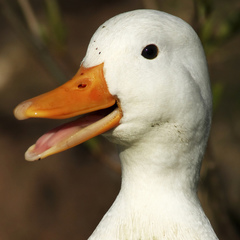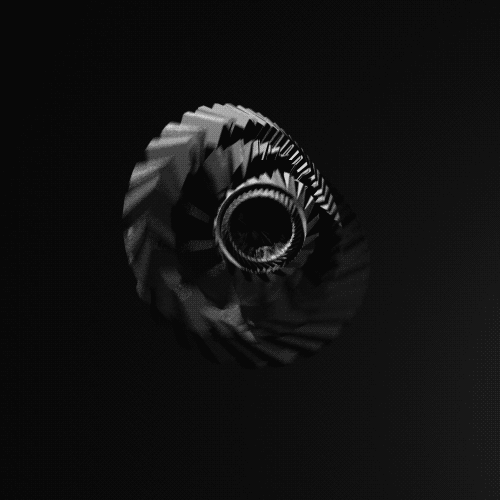-
Posts
824 -
Joined
-
Last visited
Awards
This user doesn't have any awards
System
-
CPU
Intel Core i5-6600@3.3 - 3.6GHz (Quad-Core)
-
Motherboard
Gigabyte GA-B150M-D3H DDR3
-
RAM
2x8GB Corsair Vengeance Pro 2400MHz DDR3
-
GPU
MSI AMD R9 390 8GB
-
Case
NZXT S340 Black
-
Storage
Samsung 970 Pro 512GB NVMe SSD; Samsung 850 EVO 500GB, Samsung 850 EVO 250GB; 1TB TOSHIBA DT01ACA100 7200RPM; Seagate ST2000LM003 2TB 5400RPM
-
PSU
XFX XTR 750W 80+Gold
-
Display(s)
DELL Ultrasharp U2414H (1920x1080@60Hz); Philips 226VL (1920x1080@60Hz)
-
Cooling
Hyper 212 Evo
-
Keyboard
Razer Blackwidow Ultimate 2013
-
Mouse
Logitech G502 HERO@16000dpi
-
Sound
Logitech G933 Wireless Headset
-
Operating System
Windows 10 Pro 64-bit
- PCPartPicker URL
Aleksbgbg's Achievements
-

[noob question] Connecting a printer across local networks
Aleksbgbg replied to Natsoup's topic in Networking
I'm not sure how helpful this is - but you can convert your router B into just a switch (with WiFi) (some people seem to call this a 'bridge' - I'm not sure what the distinction is) by disabling DHCP on router B. That means router A will be handing out all IP addresses, so there won't be any network address translation (NAT) to complicate everything at router B. In other words, devices connected to router B will see router A as the boss and ignore router B, which seems to be what you want. More information here: https://superuser.com/questions/607875/networked-printer-behind-second-router I haven't ever done this personally, but I hope this points you in the right direction. -
Hi, I have 2 Samsung 850 EVO 1TB SSDs. Neither has been used a lot (Samsung Magician reported 600GB written). I have a home server, and I was messing around to switch the 250GB SSD it was running on to 1TB. I used `dd` to copy the 250GB drive raw to the 1TB drive, then messed around with the partitions until it would work correctly (switch the partition table from 250GB to 1TB so it knows how big the drive is, increase the partition size linux was running on to fill the new space, then increase the file system size to match the partition size). At some point the drive stopped connecting, and I decided to just start over on the other drive because I didn't have time. I copied the data again, fixed the partitions again, and it booted, so I called it a day. Fast forward a few days, and I need the remaining 1TB drive again. Except it won't connect on the Windows machine I am writing this message from either. It doesn't show up in BIOS, and when I try to boot GParted (Debian) from USB, linux gets stuck booting, repeatedly saying "ata2: softreset failed (device not ready)". I am fairly sure this drive is in perfect working condition - as mentioned, it is twinned with the other drive I have (bought at the same time, always connected together), and they are both in a near brand-new condition. However I simply do not understand what I could have done to cause this drive to not boot correctly. Sometimes it freezes my BIOS if I boot with it connected, other times it will freeze GParted, and no system will detect it if it's connected after booting. I have tried multiple motherboards, multiple connectors (several different SATA / SATA Power connectors, several different USB to SATA adapters), multiple operating systems (Windows, Ubuntu, GParted's Debian), and even BIOS to connect to it. So it doesn't seem to be anything else but the drive itself. Maybe some issue with the firmware or with the controller? I am not sure how to deal with this, but more than anything I am confused that I could have broken it just by moving data around. Has anyone seen this before, or does anyone have any advice about things to try? Thank you!
-

WD Blue HDD With Extremely Slow Random Operations
Aleksbgbg replied to Aleksbgbg's topic in Troubleshooting
Thanks everyone, that makes sense! Learned something new, didn't know about SMR. At least I know it was meant to be that slow now. I guess if the partitions are combined and the drive is defragged, it could distribute the data so it doesn't have to overwrite as long as you're using a small fraction of it (e.g. less than 50% or 33% depending on how it's organized). But I'm not sure who gets to call the shot in defragging (the OS or the disk controller), I would be surprised if it distributes the data smartly from Windows defrag. -
Hi everyone, I have a friend with a WD Blue HDD which has unbearably slow random read / write performance. I'm puzzled as to why this is. I tried defragging the drive but this did not help. Note that the drive is 1TB but partitioned into 2. I wanted to consolidate it into 1 partition just in case this was somehow the cause, but this was not feasible because I couldn't move the data from the 2nd partition away from the drive as it takes so long. Here are the benchmark results: There is another drive in the system, much slower at 5900RPM, however it has similar performance, and particularly for random operations it is much faster: Here are the drives in question - the slow drive is the Western Digital one: There is a separate 970 SSD that is used as the OS drive. Details from Speccy about the drives: Slow WD drive: Seagate drive (has been used for longer than the WD drive): Does anyone know what might be the cause or what could fix it? Thanks!
-
Hi all, I have a dual boot with Windows 10 and Ubuntu using GRUB. One day my PC failed to boot which reset my BIOS settings, and since then GRUB has stopped accepting keyboard input. As such, I have been unable to boot into Ubuntu since Windows 10 is my default installation. I have been unable to find what BIOS settings I had that made GRUB work before. It's definitely not Fast Boot or Legacy USB Support because I have fast boot disabled and Legacy USB Support enabled (I've played with many BIOS settings but none seem to fix the issue). I've also tried all USB ports on my PC and a different USB keyboard, which hasn't worked either. Sometimes the keyboard even lights up in the GRUB menu, so it seems to me like the keyboard is active but GRUB is ignoring my keypresses... At this point I'm out of ideas, beyond reinstalling my Ubuntu installation along with GRUB, which is not ideal. Here is my system: Ryzen 7 3800X HyperX 16GB 3200MHz RAM Gigabyte AORUS B450M NVMe SSD for boot (GRUB + Windows + Ubuntu all on here) Does anyone know what might make my keyboard work with GRUB?
-
Hi all, I'm looking to add two more NVMe SSDs to my build, however I only have one NVMe slot that's already taken on my motherboard. However, under my GPU I have a free x16 PCIe slot. So I need a PCIe to NVMe adapter. However, I don't want to suffocate my GPU. I want to put my SSDs somewhere else on the case, e.g. in the hard drive rack. I'm looking for a cable that goes from PCIe to NVMe, and ideally fits two of those. I don't know what this is called, could anyone help me out?
-

Game Stutter when Watching Video (and vice versa)
Aleksbgbg replied to Aleksbgbg's topic in Programs, Apps and Websites
I ran DDU and installed drivers again. Let's hope this fixes it. If this is true, then I'm kind of fucked. One monitor is running 165Hz and the other is 60. I guess I could go full screen. -
Hi all, Is it a modern hardware / OS limitation that I can't watch a [YouTube] video whilst playing a game and have both run smoothly? For example I like having music videos on the side whilst playing low-effort games like Rocket League, however doing this makes either the game stutter, the video, or both. For reference I'm running a Ryzen 3800X and a 5700 XT so hardware is no issue here. FYI, I'm running Windows 10.
-
Update: disabling HDR fixes this.
-
Hi all, I just bought an Aorus FI27Q monitor, and when sharing screens in Discord or capturing the screen in OBS, the colours are washed out. Furthermore, in Discord looking at Google images causes the shared picture to get tinted red, green, blue, violet, etc. In OBS, capturing the screen also doesn't update unless the mouse is moved (the image is still otherwise). This only happens on the specific monitors - sharing other monitor is OK. It is fine when I capture a single window. Does anyone know how to fix this?
-
Yes, as it says above, I tried many different combinations of SATA power and data cables, including ones that worked on different drives.
-
Hi all, I just changed my motherboard from a Gigabyte B150M to a Gigabyte Aorus B450. This is to go from i5-6600 to Ryzen. I changed nothing apart from CPU, RAM, and Motherboard. All the connections were restored. However, when I booted up my new PC, my E: drive (Seagate ST2000LM003) was no longer connected. After a while, it connected (Windows said: "Removable device connected"). On the next restart, it was gone, again. I fiddled around, changing SATA power and SATA data cables around, nothing seemed to work. Eventually I unplugged the drive from the system and connected it via USB to SATA. It worked! Now after a few more tries I discovered that the drive was not powering up. I held it when it had USB power, and then when it had SATA power, and I could not feel it moving when it had SATA power. I also tried connecting a different Seagate (ST500LM012) drive to the same power and data cables, and that drive works fine. So my question is - how do I get it to power up? All of the cables are connected, the motherboard SATA is fine, the drive is fine, the only thing that could be wrong is the drive not liking how much power it's getting, from my understanding.
-

Coming back after 7 years to build a Gaming PC.
Aleksbgbg replied to berianmol's topic in New Builds and Planning
This was my first instinct as well. -

How to Test if RAM Speed is Bottleneck?
Aleksbgbg replied to Aleksbgbg's topic in CPUs, Motherboards, and Memory
Games, mostly Rocket League -

How to Test if RAM Speed is Bottleneck?
Aleksbgbg replied to Aleksbgbg's topic in CPUs, Motherboards, and Memory
I used Cinebench R20, yes. What would you recommend instead? I'm happy to investigate further. I will also be trying single-channel soon. As for the drop at 1866, yeah, turns out my CPU supports only 1333 and 1600, so I'm guessing at 1866 it had to skip half the cycles, that it couldn't take advantage of, which may have given an effective speed of 933MHz. Or something along those lines.








.thumb.gif.5f14f8fd8bb14aea47162a102d949bd5.gif)









